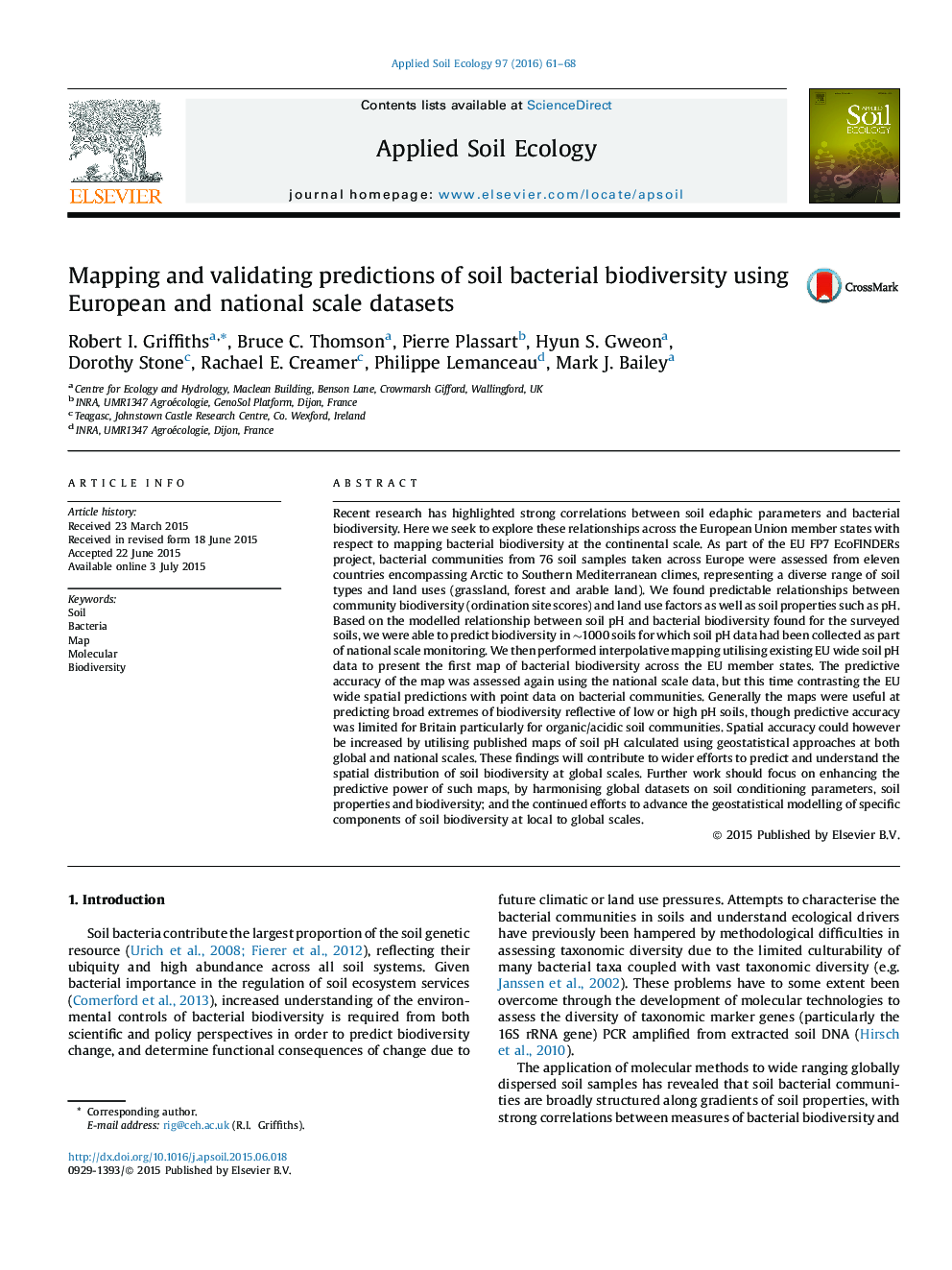| کد مقاله | کد نشریه | سال انتشار | مقاله انگلیسی | نسخه تمام متن |
|---|---|---|---|---|
| 4381974 | 1617786 | 2016 | 8 صفحه PDF | دانلود رایگان |
• Relationships between pH and bacterial biodiversity are robust across Europe.
• Bacterial biodiversity mapped across Europe.
• Map accuracy explored by contrasting with national scale datasets.
• Identifies the need for better soil property maps to predict global soil biodiversity.
Recent research has highlighted strong correlations between soil edaphic parameters and bacterial biodiversity. Here we seek to explore these relationships across the European Union member states with respect to mapping bacterial biodiversity at the continental scale. As part of the EU FP7 EcoFINDERs project, bacterial communities from 76 soil samples taken across Europe were assessed from eleven countries encompassing Arctic to Southern Mediterranean climes, representing a diverse range of soil types and land uses (grassland, forest and arable land). We found predictable relationships between community biodiversity (ordination site scores) and land use factors as well as soil properties such as pH. Based on the modelled relationship between soil pH and bacterial biodiversity found for the surveyed soils, we were able to predict biodiversity in ∼1000 soils for which soil pH data had been collected as part of national scale monitoring. We then performed interpolative mapping utilising existing EU wide soil pH data to present the first map of bacterial biodiversity across the EU member states. The predictive accuracy of the map was assessed again using the national scale data, but this time contrasting the EU wide spatial predictions with point data on bacterial communities. Generally the maps were useful at predicting broad extremes of biodiversity reflective of low or high pH soils, though predictive accuracy was limited for Britain particularly for organic/acidic soil communities. Spatial accuracy could however be increased by utilising published maps of soil pH calculated using geostatistical approaches at both global and national scales. These findings will contribute to wider efforts to predict and understand the spatial distribution of soil biodiversity at global scales. Further work should focus on enhancing the predictive power of such maps, by harmonising global datasets on soil conditioning parameters, soil properties and biodiversity; and the continued efforts to advance the geostatistical modelling of specific components of soil biodiversity at local to global scales.
Figure optionsDownload as PowerPoint slide
Journal: Applied Soil Ecology - Volume 97, January 2016, Pages 61–68
